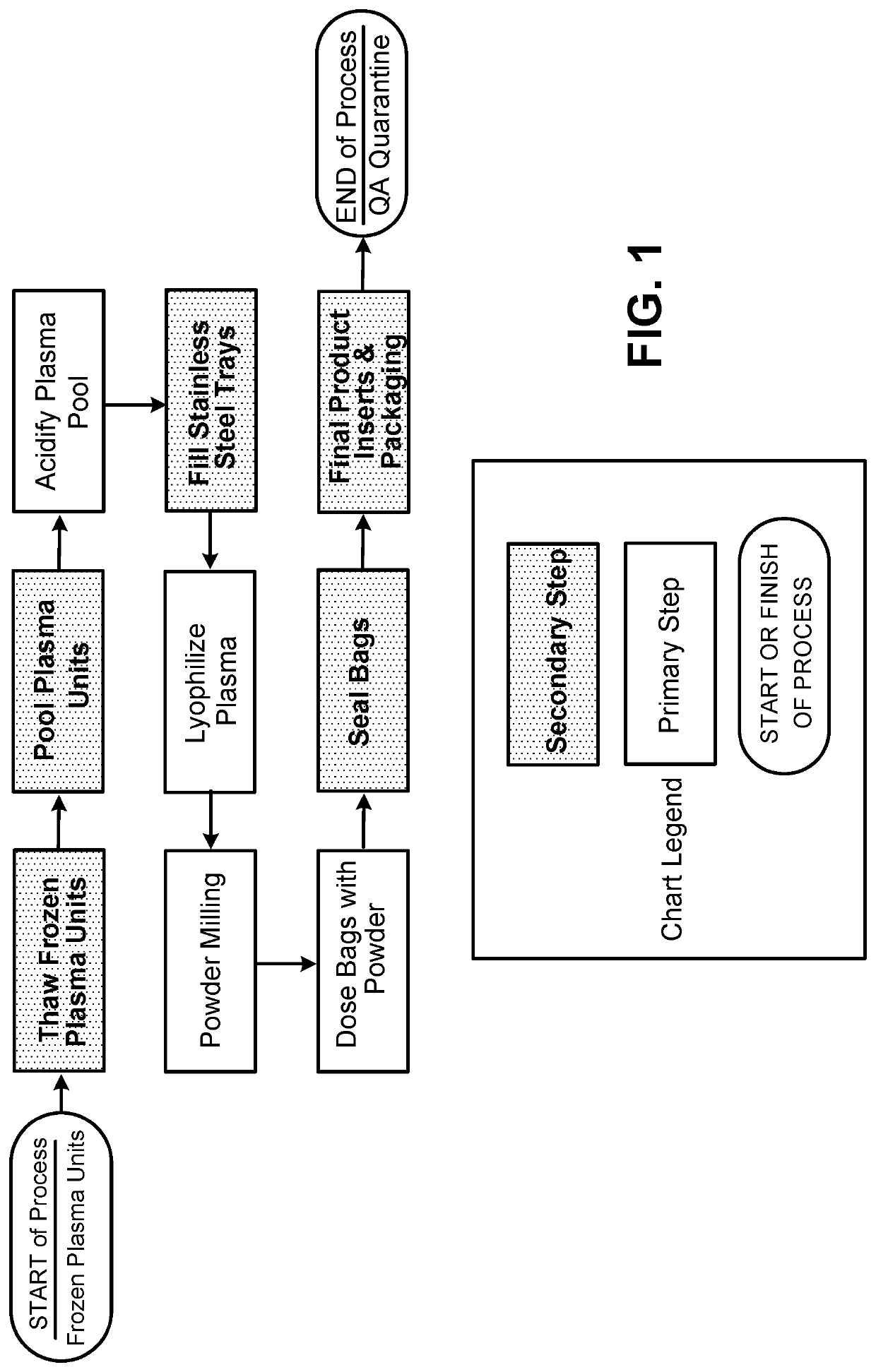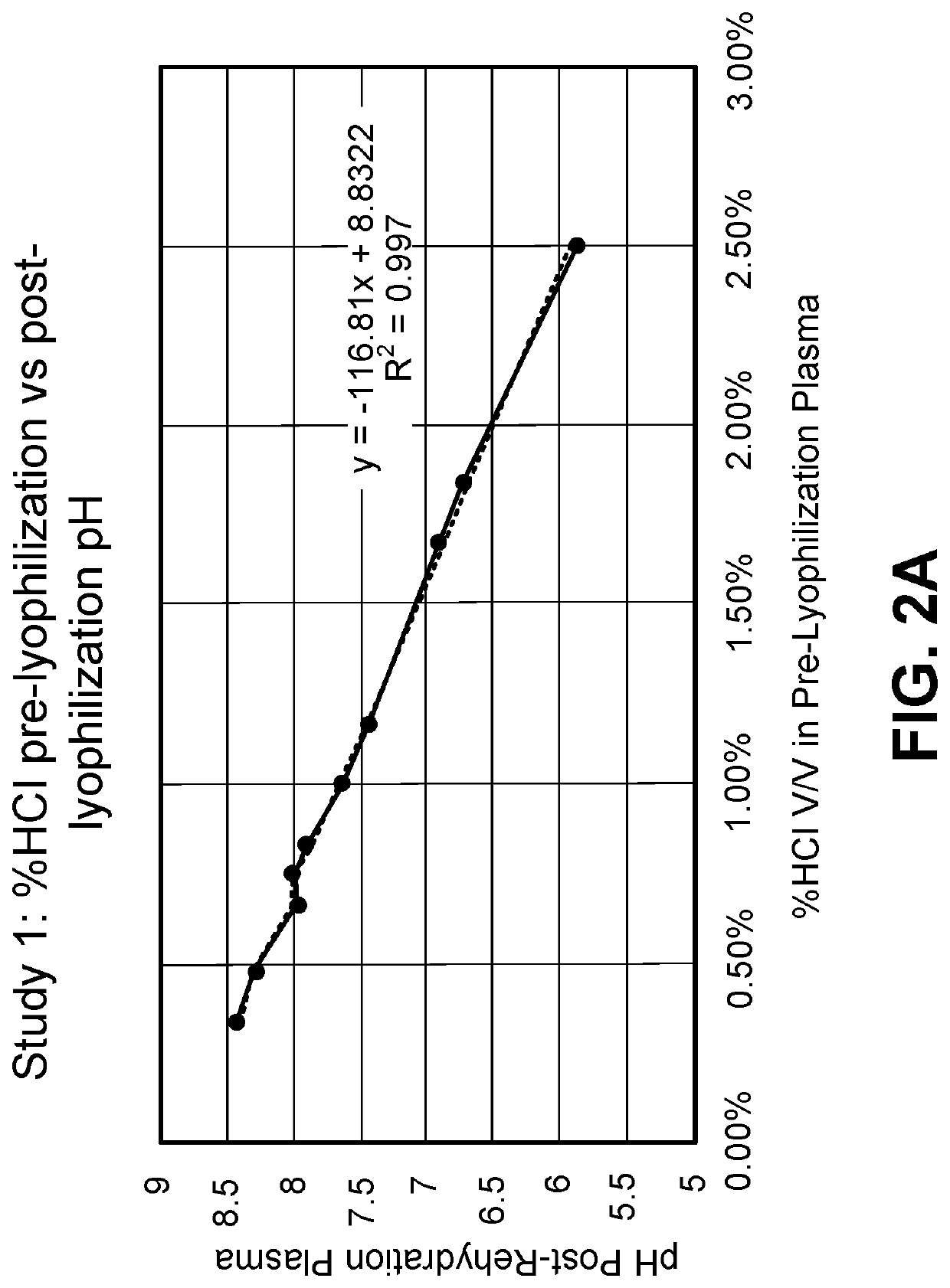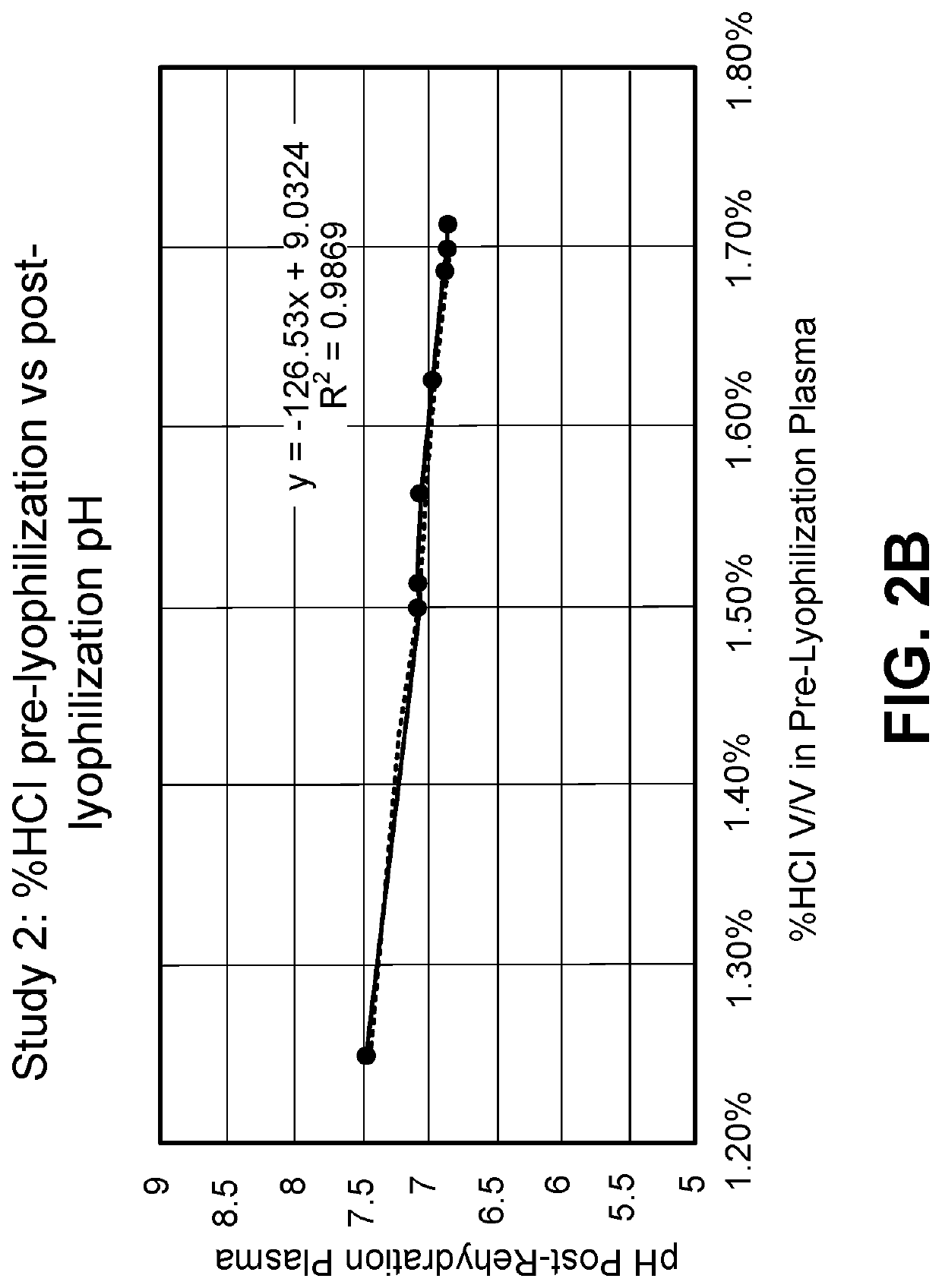Materials and methods for blood plasma preparations
a technology of blood plasma and preparation materials, applied in the field of blood plasma products, can solve the problems of logistical constraints, risks to the lives of dogs, and inability to provide appropriate canine transfusion products, etc., and achieve the effect of reducing the risk of death and the success of missions, and reducing the risk of blood loss
- Summary
- Abstract
- Description
- Claims
- Application Information
AI Technical Summary
Benefits of technology
Problems solved by technology
Method used
Image
Examples
example 1
[0186]A lyophilized plasma product was prepared generally as shown in FIG. 1. Briefly, frozen canine plasma units were thawed and pooled. The pooled plasma was acidified with various amounts of hydrochloric acid.
[0187]The amount of hydrochloric acid (HCl) used can have an effect on the final pH of the rehydrated plasma. Using 1N HCl, concentrations (% v / v) of about 0.5% to about 2.5% were determined to result in a pH of the rehydrated plasma of about 5.8 to about 8.5 (FIG. 2A). A closer study of about 1.25% to about 1.7% HCl showed that this range resulted in rehydrated plasma with a pH of about 6.8 to about 7.5 (FIG. 2B).
example 2
[0188]Acidified pooled canine plasma was prepared as in Example 1, then lyophilized (Table 1) and milled into a powder.
TABLE 1Lyophilization protocolPhaseTemperatureVacuumPhaseTypeSetpointTimeSetpointFreezeHold−50C.300 minutesN / AVacuumHold−50C.VariablePrimaryRamp−5C.540 minutes0 mTorrDryHold−5C.1080 minutes 0 mTorrRamp+5C.120 minutes0 mTorrHold+5C.2040 minutes 0 mTorrSecondaryRamp+25C.240 minutes0 mTorrDryHold+25C.240 minutes0 mTorrHold+25C.>60 minutes0 mTorr
[0189]The milled powder was filled into bags and sealed. The bags can be further labeled and packaged (an example labeled product is shown in FIG. 3), and optionally quarantined.
Example 3
[0190]Acidified pooled canine plasma was prepared as in Example 1, then lyophilized and milled into a powder as in Example 2, then rehydrated. Properties of the rehydrated plasma were evaluated. Threshold and objective values for these properties are shown in Table 2, while measured values are shown in Table 3. In these tables, “Fib” is fibrinog...
example 3
[0191]The long term stability of products prepared by the method of Example 2 was tested at 25° C. and 75% relative humidity (RH) using two batches. The batches were characterized by fibrinogen content (Table 4), coagulation factor activity (factors VII (Table 5) and VIII (Table 6)), von Willebrand Factor activity (Table 7), Albumin content (Table 8), and pH (Table 9). In each Table, ND=not determined. After 6 months of storage, the product still met all acceptance criteria and did not demonstrate any significant evolution in product quality.
TABLE 4Fibrinogen (mg / dL)MonthSpecBatch ABatch B0150202219015020419801501982071150ND189315018618031501821926150184ND6150191ND
TABLE 5FVII:C (%)MonthSpecBatch ABatch B030625703038510305252130ND533304150330405263042ND63044ND
TABLE 6FVIII:C (%)MonthSpecBatch ABatch B050105147050114128050107133150ND883506964350706965057ND65064ND
TABLE 7VWF:Ag(%)MonthSpecBatch ABatch B050107109050102107050100106150ND983508169350827465074ND65084ND
TABLE 8Albumin (g / dL)Mon...
PUM
| Property | Measurement | Unit |
|---|---|---|
| concentration | aaaaa | aaaaa |
| concentration | aaaaa | aaaaa |
| temperature | aaaaa | aaaaa |
Abstract
Description
Claims
Application Information
 Login to View More
Login to View More - R&D
- Intellectual Property
- Life Sciences
- Materials
- Tech Scout
- Unparalleled Data Quality
- Higher Quality Content
- 60% Fewer Hallucinations
Browse by: Latest US Patents, China's latest patents, Technical Efficacy Thesaurus, Application Domain, Technology Topic, Popular Technical Reports.
© 2025 PatSnap. All rights reserved.Legal|Privacy policy|Modern Slavery Act Transparency Statement|Sitemap|About US| Contact US: help@patsnap.com



